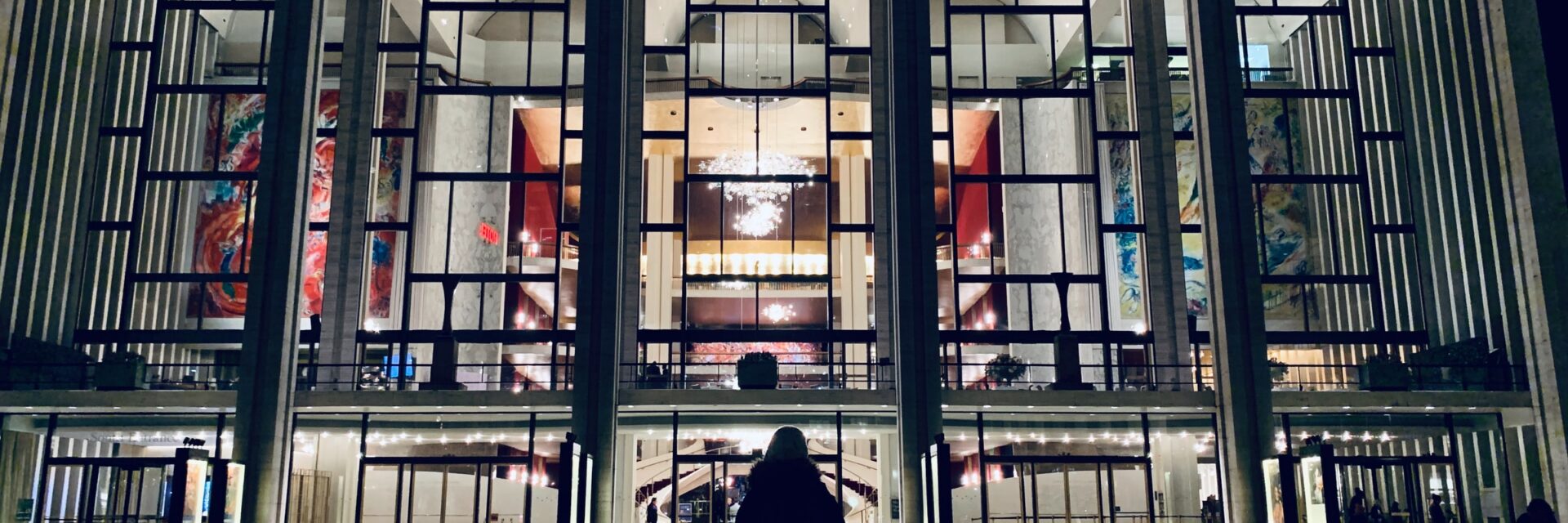- What We Do
- Understanding your audience
- Engaging new audiences
- Designing experiences
- Building loyalty
 Case studies
Case studiesNY Phil Case Study: Taking audience understanding to the next level
‘The work with MHM has provided us with invaluable new tools as we aim to expand our reach and presence within the New York market in the coming seasons. We are grateful for their diligent research and fresh perspective and look forward to putting the suggestions into practice.’
‘Who are our audiences?’ is a question we hear often. When we partner with organizations our role is often to shed light on audiences for the first time, helping our clients to bring the voice of the audience into their decision-making.
That wasn’t the question the New York Philharmonic (or NY Phil as it has now rebranded) came to us with. NY Phil is an organization with good understanding of its audience and with strong, long-term and much valued relationships. They knew their audience well.
Instead, they wanted our help to take audience insight to the next level. Their question: ‘How can we harness the power of classical music to form deeper, more meaningful connections, as well as reach new and different audiences?’

NY Phil performances deliver, but what does that mean for the developing audiences?
From the start of our work together, it was clear that those strong relationships were well earned. We asked audiences to describe NY Phil. Quality came up most often, along with Masterful, Inspiring and Memorable. There was no doubt that audiences have fulfilling, and enriching experiences and they appreciate the atmosphere of attending a concert – the sense of occasion and excitement.
Audiences also held reverence for the history and tradition of NY Phil – it’s part of the fabric of the city – but we also saw scope to influence and evolve audience perceptions – to bring them in line with the NY Phil of today.
At a time of much change – the significant renovation of their home at the Lincoln Center, the David Geffen Hall; a planned visual identity refresh to reflect a more contemporary, welcoming brand, and an increased focus on digital content due to the pandemic pausing live performance – there was much planning and decision-making at play where deeper audience insight, and using psychographic audience segmentation, could give clearer direction and focus.
We began with a facilitated discovery workshop with the NY Phil team to explore what we already knew and pull out their assumptions, challenges and questions. We then set out to answer those questions with a multi-method approach: a survey of the NY Phil database, a comprehensive market study (Audience Atlas NY) and a series of virtual focus groups.

Audiences can really articulate the power of music
The first task was to really go deeper on what audiences really got from classical music – how did they describe the power of music? The market overwhelmingly agreed that classical music helps us to connect to our feelings. They often chose powerful, emotive language demonstrating the power of classical music and the emotional outcomes it can deliver. It’s clearly far more than just an enjoyable experience – it’s uplifting, moving, exciting, escapism. These are the ideas that we need to tap into to make a more meaningful connection and to persuade others to give it a try.
‘I am transformed to a different world when I attend a NY Phil concert. I become encapsulated with the story being performed.’
And the market for classical music is bigger than you might expect
Next we needed to understand the potential. Approximately 10.6m people in New York say they are in the market for classical music – that is, they have been or are interested in going in the future. Around half of the NY population have already been to a concert at some point (27% having done so in the past 3 years). And one in five are interested, but still need to be persuaded to visit.
30% rejected classical music outright. This is a higher proportion than a lot of other artforms (just 14% reject an art museum, 24% say no without trying to theater). So there was more to explore here – what is it about classical music that so many people dismiss without trying and, crucially, can we change their mind?
But there are a number of misperceptions that are holding others back
Our research highlighted a number of misperceptions about classical music stopping others, in particularly younger people, from attending. These included: Boring, Old, Dull, Slow, Sophisticated.
None of this was hugely surprising to the NY Phil or to us. We know that attracting young people to attend a classical music concert is not a new problem. We’ve heard these concerns before and we know they are hard to tackle.
To truly invite new, less familiar audiences, psychographic audience insight could help NY Phil position classical music in a way that really resonates, we need to cut through the noise and spark curiosity.

Culture Segments messaging is specifically designed to push the right buttons
We saw earlier that the audience could articulate the power of music. Culture Segments is a way to tap into that power in a more targeted, specific way. The Essence segment – who prize quality and seek almost spiritual outcomes – already loved NY Phil. They didn’t need to work hard to invite them in, but this was a segment to invite to take a risk with any innovation.
For Expression – who value shared experiences and persona connections – we needed to show a warmer, human side of the NY Phil. Positioning the organization, and classical music more broadly, in a way that they may not have seen before. Focusing on shared, social experiences that will also deliver meaningful emotional outcomes and benefits and using grassroots support to create more connections and advocates. Expression don’t want to be held at arms length by a ‘serious’ institution, they want to be invited in.
We might have assumed that Stimulation – who seek discovery and new experiences – would be wary of NY Phil as such an historic institution but the opposite was true. Those who were already attending valued the roots in the city and special place in New York’s history. Attending NY Phil was a special experience for that reason – it’s a ‘must do’ New York experience that Stimulation can’t miss out on – and a world-class one at that. That message needed to be communicated to the Stimulation people who weren’t attending yet – tapping into their FOMO to get them to give it a try.
Embedding values-based segmentation across communications
We worked with the NY Phil team to maximize the impact of these findings – generating ideas to target specific segments in a way that really resonates and helps to change their perceptions of what a classical music concert might be like. This is what they said about the experience:
‘It’s incredibly important for organizations to have a clear understanding of what motivates audiences – whether they are season subscribers or have never engaged with us. MHM’s work provided an important layer to our rebrand process with our partners at Ogilvy to create an audience-focused new visual identity. Our work with MHM allowed us to tap into a deeper understanding of our audience and potential audience.As we move towards the opening of David Geffen Hall, we plan to engage the Essence and Expression segments that make up most of our audience while also expanding our language and imagery to be more appealing to segments we have yet to reach. We plan to tag existing accounts in our database with their respective segment and reach out with specific messaging. For instance, when speaking to the Expression segment about the new hall we will lean into welcoming people into our “home” and the renewed sense of community the space provides. We will also use the findings in our acquisition messaging as we reach out to people in the New York market who have not yet engaged with the NY Phil.
From the research, we have learned that our largest areas of opportunity fall within the Affirmation and Stimulation segments. For these audiences, we’ll aim to craft our messaging in a way that capitalizes on the new experience of David Geffen Hall and creates a sense of urgency to visit and experience the NY Phil.The work with MHM has provided us with invaluable new tools as we aim to expand our reach and presence within the New York market in the coming seasons. We are grateful for their diligent research and fresh perspective and look forward to putting the suggestions into practice.’
NY Phil team - Engaging new audiences
- Understanding your audience
